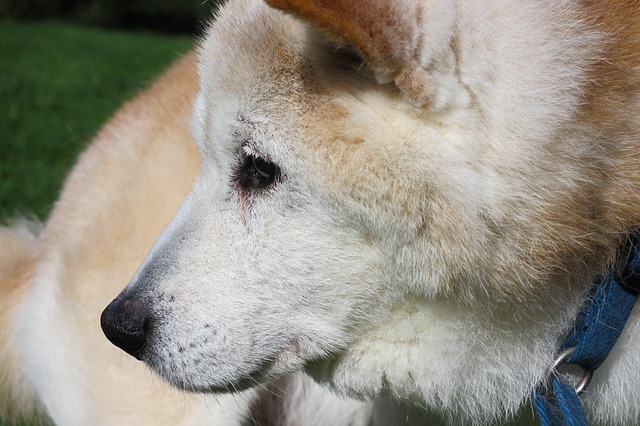Owls belong to the distinctive order Strigiformes which consists of both barn owls (Tytonidae) and typical owls (Strigidae). Strigiformes deals with the nocturnal predators. The oldest known fossil owl is Ogygoptynx wetmorei Paleocene predating 58-million-years ago; it was discovered in Colorado. Bubo poirrieri and Strix brevis from the Lower Miocene are the oldest fossils (22 – 24 mya) of the order Strigidae. These were found in France and the United States. While owls are spread all over the world they are nonetheless one of the least understood birds. There are around 200 recognized species owls.
Owl Facts For Kids
Anatomy
- Depending on species owls vary in size and physical strength. They may be as large as the massive Eurasian eagle-owl (Bubo bubo) at 9.25 lb (4.2 kg) or as small as an elf owl (Micrathene whitneyi) at 1.41 oz (40 g). Very few other birds can show this much diversity in size and length.
- Owls are known for their greater forward-facing eyes and ear holes. The beaks are very much similar to that of hawks speaking more of a flat face. The owl feathers can be attuned to concentrate more on sounds that comes from the surroundings.
- Owls are adept to turn around their heads as much as 270 degrees in either direction.
Read More: What Do Different Types of Owls Eat?
- Owls are far sighted birds they cannot see things that are only few centimeters away.
- Eagle-owl (Bubo bubo) is the largest owl in the Strigidae family. The northern race of the Eurasian eagle-owl (Bubo bubo) is a large bird of prey weighing 9.2 lb (4,200 grams) with a length measuring up to 23.6–29.5 in (60–75cm).
- True to its name pygmy owl (Glaucidium minutissimum) weighs only an average of 1.7 oz (47.8 g).
- The ears are set asymmetrically in owls’ skull with the help of which they are able to pinpoint sound in flight. One set is slightly higher than the other.
- The owls are adept to make silent flights as the surface of their feathers is not smooth but covered in a fine down. Thanks to the silent flight which makes them to go unnoticed by their prey.
- Most owls have feathers right down to their talons. The feathers on their feet offer an extra protection against rodents and they also keep them warm in cold. Fishing owls is the only species (in Strigidae) that do not have hair on their talons but their feet are well suited for getting wet regularly.
- The Great horned owl has the greatest range that extends from Alaska to Argentina.
- Many owl species have forward-pointing eyes, facial disc, short neck, and of course a large head.
- All strigids have brown to gray plumage which is spread in complex patterns and thus it helps in camouflaging a bird while roosting.
- Owls have extremely keen sense of hearing with the help of which they capture their prey at night.
- Owls are able to locate the sound source with high precision. They can catch wide range of sound frequencies and they can also find differences in the intensity of sounds and in arrival time. This is all achieved due to its large ear openings that are located on the sides of their heads.
- Unlike in any other bird, owls have large eyes which are highly sensitive to low light. Although they are adept to see well at night but they can’t see in extreme darkness. It is estimated that a tawny owl can see objects in a light which is two times lower than that of humans.
- While they are unable to see objects below the forest canopy their vision is good enough to avoid them obstacles. It shows that forest owls typically use their spatial memory to avoid obstructions.
Distribution
- Owls are widely distributed in the world except in Antarctica. Tropics hosts about 80% of owls species while 25% are found in Central and South America; 20% in Africa, 25% in Asia; and 10% in Australasia.
- The barn owl has a cosmopolitan distribution; they cover much of the tropics in the United States and Europe.
- Six owl species including short-eared owl are Holarctic. Short-eared owl occupies the islands of Galapagos and Hawaii.
- The Itombwe owl (Tyto prigoginei) is known from only two locations in the Congo, and the longwhiskered owlet (Xenoglaux loweryi) is restricted to a small area in the Peruvian Andes.
- In Old World, the Eurasian eagle-owl is the most common ranging from Spain and Norway going as far as the eastern China, northern Hokkaido (Japan), and Russia.
- The wood-owls are widespread and their name indicates they are mostly found in the world’s forests.
- The short-eared owl is the most common of the typical owls as it occurs in South and Central America, Asia, Europe, but is absent from Australasia.
Habitat
- Owls are found in all the major habitats of the world; from temperate coniferous forests to grasslands, from moist tropical jungles to deserts. All in all about 95% of owl species occupy the forested habitats. Leaving aside a few species nearly all owls fancy living in forests or woodlands. The richer the forest the greater the number of owls that lives in it.
- Savigny’s eagle-owl (Bubo ascalaphus) is the only exception that lives in deserts and thus it is also known as the desert eagle-owl. It has a sandy color and a glorious buff. Hume’s owl (Strix butleri) is yet another species that is exclusively found in desert environment such as palm groves, rocky gorges, and desert wadis.
- In cities they are observed in suburban woodlots, farmlands, and pastures.
- The fishing owls belong to the genera Ketupa and Scotopelia are more apt to live in the swamps, lakes, and rivers. Here they easily find fish to prey on.
- The northern specie such as
- Some of the species such as Otus, Bubo, Glaucidium, and Ninox have adjusted well to live with humans in wooded neighborhoods in many parts of the world.
- Fishing-owls (Scotopelia) of Africa and Fish-owls (Ketupa) of Asia are known to survive in streamside forests and mangroves as they rely on aquatic prey. However no owls are absolutely aquatic.
- Owls typically avoid harshest deserts and high elevations.
Behavior
- Owls as you may know are nocturnal creatures. That is not to say that they only come out at night. Many owl species are active in daylight such as snowy owls (Nyctea scandiaca), most species of Glaucidium, and short-eared owls.
- During daytime, owls are observed perching quietly in a concealed site and they use their plumage to camouflage.
- Unlike most other birds, owls are fearless creatures and they don’t often fly even when humans approach them closely.
- Owls produce sounds like ‘hooting’ which means that either they are ready to mate or there is a predator nearby.
- The male stops hooting as soon as the mating starts. Males are generally more vocal than females. In many owl species parents produce almost similar songs to show territorial advertisement and courtship.
- Less than 20 species are known to be migratory.
- Owls are almost entirely nocturnal and they find themselves hiding in bushes all day long. They do not move even when humans approach them in daylight. This indeed gives the wrong impression that owls make good pets.
- They enjoy bathing and are most likely to enjoy sunshine. A few species will come out during day.
- They will only defend their territory directly surrounding their nesting area. Owls are not generally known to defend territory in which they regularly hunt.
- Owls are not able to see in extreme darkness.
Read More: How Long Do Owls Live?
A Northern Pygmy Owl (Glaucidium gnoma) is going to feed on a mouse in Montana.(Photo by Anthony Mercieca. Photo Researchers, Inc.)
Feeding Ecology and Diet
- Owls are known to feed on different kinds of prey with only a few species consumes carrion; all species kill and eat live animals.
- They feed on many invertebrates.
- There are 40 species of Otus out of which 30 species exclusively feed on insects.
- Amphibians do not form the essential part of owl’s diet. Fishing-owls and fish-owls consume frogs.
- Otus and Glaucidium rely on snakes and lizards for their consumption.
- Birds are not the major prey item of any owl species but Glaucidium do eat birds.
- The medium-sized and large-sized owls consume small mammals including rodents and shrews. Eagle-owls (Bubo) in the northern latitudes prey rabbits, hares, skunks and even monkeys.
- Owls prey on a wide variety of voles.
- Some medium-sized species will feed on small mammals such as rats and young rabbits. Snakes do not make the bulk of their diet precisely because snakes move around during the heat of the day while owls do not.
- Perhaps the most rapacious of the owls is the great horned owl which has been seen to kill red-tailed hawks.
- Some large owls including great gray owl typically rely on lemmings and voles for their consumption.
- The way owls hunt reminds us of the diurnal raptors excluding falcons and vultures. Unlike falcons, owls never swoop on their prey from a height nor do they eat carrion. They never soar either. Owls fancy ‘still hunting’ method.
- Hawk-owl truly lives up to its name as is known to use hunting technique employed by accipiters. Unique amongst them is the northern hawk-owl which is fairly quick and catches a bird in flight.
- Owls normally hide excess food and get back to find and consume later.
- They never build nests of their own rather owls nest in shallow scrapes in the ground, in shallow caves, or in the cavity of a tree cavity.
Read more: What do Owls Eat
Reproductive Biology
- Most owl species are typically non-social while nesting. Some of them also defend their breeding territories.
- Burrowing owls (Athene cunicularia) and long-eared owls (Asio otus) do not defend their territories. They build nests as close as 50 ft (15 m) from conspecifics.
- Asio often found roosting in groups consist of 10 – 30 individuals in the non-breeding season.
- Owls typically breed only once per year. Barn owls however are seen breeding as more as all year-round in the tropics but at least twice per year in temperate latitudes.
- Owls that eat small mammals generally breed in early spring or late winter but insectivorous breed in early summer or late spring.
- In order to attract a female the male owls will start ‘hooting’ at least one month before nesting.
- They often nest in broken-top snags, cavities in cliffs, or nests abandoned by other birds. Snowy owls, marsh owls, and short-eared owls nest on the ground. The burrowing owl as its name suggests, nest underground in burrows. These burrows are often already used by prairie dogs, ground squirrels, or badgers. Small species such as pygmy owls nest in tree cavities left by woodpeckers.
- Owls lay white rounded eggs and the clutch size varies with the species. The small insectivorous owls lay small clutches of 2 – 4 eggs but piscivorous species and other large owls also have the same clutch size. The rodent-specialist owls have a clutch size of 5 – 8 eggs but it only occurs when there is no shortage of prey.
- Owls lay eggs after a gap of two days.
- The mother will incubate the eggs. The father will bring the young and the female all the food necessary to stay alive.
- The incubation lasts 22 days in the smallest owls while in larger species it can be up to 32 days.
- The young in the tree-nesting or cavity-nesting are quick in initiating their first flight while those in the open-nesting take 2 – 3 weeks to fly. They do hop or walk along the tree branches to escape from the nests.
Conservation Status
Risk of Extinction: 27 species
Threatened: 20 species
Vulnerable: 14 species
Endangered: 1 species (Ferruginous pygmy-owl Glaucidium brasilianum)
References
BirdLife International. Threatened Birds of the World. Cambridge: BirdLife International, 2000.
del Hoyo, J., A. Elliott, and J. Sargatal, eds. Handbook of the Birds of the World. Vol. 5, Barn-owls to Hummingbirds. Barcelona: Lynx Edicions, 1999.
Hume, R., and T. Boyer. Owls of the World. Limpsfield: Dragon’s World, 1991.
Seamans, M.E., R.J. Gutiérrez, C.A. Moen, and M.Z. Peery. “Spotted Owl Demography in the Central Sierra Nevada.” Journal of Wildlife Management 65 (2001): 425–431.







Leave a Reply